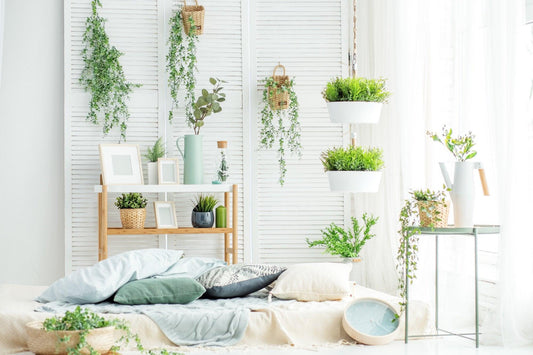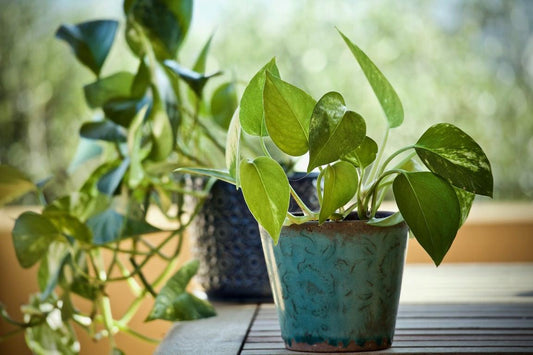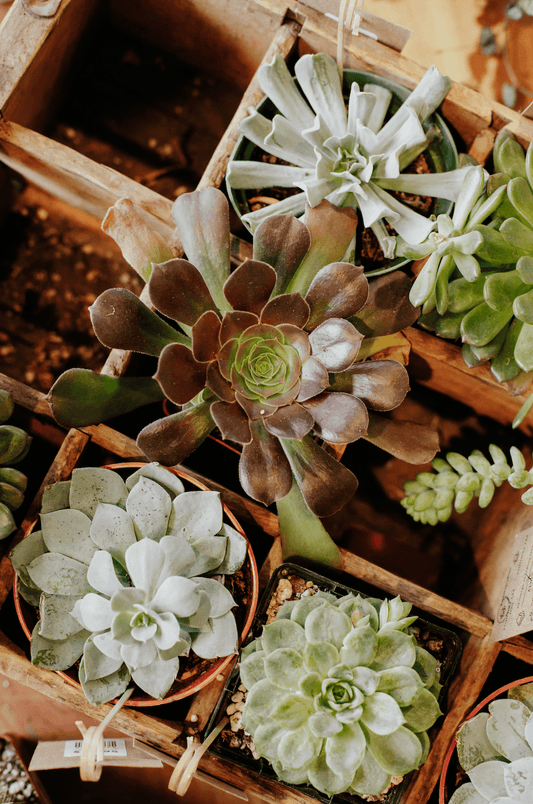Identifying Pests in your Indoor Plants
Our house plants provide the gift of nature and aesthetics in our spaces. However, once nasty pests come along, it can bring serious problems. Keeping your plants healthy is very simple if you know how to mark the early signs of trouble.
Let’s go back to the basics: a healthy plant exhibits:
-
🌱 sturdy stems
-
🌱 vibrant set of leaves
-
🌱 consistent leaf shapes
If this doesn’t describe what your plant looks like, then this is the time you inspect for pests!
🚩 THE RED FLAGS
House plant pests can quickly multiply due to the lack of wild predators to keep them at bay. Because of this, it’s best to check up on your plants for any signs of insects at least once a week.
👀 Here are the common signs that your indoor plant may be infected with insects:
-
There are changes in leaf colors or textures
-
Leaves are spotted, speckled or yellowed
-
Leaves become distorted or misshapen (looking cupped or pinched)
-
There are webbings draped along the leaf undersides or intersections
-
Leaves are unusually shiny and sticky due to honeydew, a substance secreted by insects, which in turn develops molds and black smudges on its surface
🤔 PLAYING THE DETECTIVE!
Now, how do you detect where the pests are? Look for insects lurking beneath the leaves! They are usually clustered along new budding stems or leaves, or even right at the intersection of when stems and leaves are enjoined.
For further search, you can get a power magnifying glass to confirm your suspicions into an actual diagnosis.
🔎 FINDING OUT WHO’S THE CULPRIT
There are specific indicators that validate the presence of pests in your plants. Use this guide to track down the intruder in your house plants:
🐛 Aphid
Appearance: small green, yellow, black or white soft-bodied insects
Location: commonly found in new growth
Feeding: produces honeydew and yellow and/or distorted leaves
Warning: they reproduce quickly, resulting to heavy infestation in just a few days
🐛 Mealybug
Appearance: small, cotton-like insects
Location: easily visible and most often on stems or leaf undersides
Feeding: produces honeydew and distorted growth
Warning: hard to control when there are many. Isolate infested plants to limit insect spread.
🐛 Scale
Appearance: Stationary, sucking insects with shell-like coverings
Location: typically gathers on stems and leaf undersides, can also appear leaf surfaces
Feeding: produces honeydew and distorted growth
Warning: hard to control
🐛 Spider Mite
Appearance: extremely tiny creatures thriving in hot & dry conditions
Location: clusters along leaf undersides or where leaves join stems
Feeding: produces speckling on leaf surfaces, causing plants to look faded
Warning: hard to eradicate; webbing occurs on heavy infestations
🐛 Whitefly
Appearance: resemble tiny white moths
Location: flutter around when infested plants are disturbed
Feeding: produces honeydew, usually on leaf undersides
Warning: overall plant growth is stunted; leaves may turn yellow and die
Leaf dwellers that attack plants include Aphids, Spider Mites, Scale and Mealybugs. Fungus gnats are annoying but not detrimental.
🙅 HOW TO AVOID THE CREEPY-CRAWLIES
Minimize the cases of your plant infestations with our helpful tips:
-
ALWAYS CHECK. Thoroughly inspect your plants each time you water them, check the leaf undersides and intersections where bugs usually like to hang out.
-
WIPE ‘EM OFF. Regularly clean the leaf surfaces using a damp sponge or cloth, or by spraying the plants (gathering dust can become a shelter for insects and eggs)
-
DROP THAT FEATHER DUSTER. Using this only promotes the easy transfer of insects and eggs
-
THE IDEAL SPOT. Let your plant thrive at the spot that offers the perfect growing condition. Your plants can fight off the pests when they are at their best!
-
HOSE IT DOWN. Remove budding insects by hosing down your plants, best used with a hose with pressurized nozzle sprayer so you can direct the water direction underneath the foliage. You can also do the slow but sure gentle spray method because jetting your plants too hard can tear leaves from stems.
-
DUNK IT IN! For small or hanging plants, you can dunk the entire planter into a 5-gallon bucket of water for 15 minutes. This will cause insects to flee! You may also add drops of liquid soap to reduce the water more ‘wet’ (This is not applicable for plants that demand dry soil, such as succulents and cactus, or plants that go dormant for the winter).
For more helpful tips on plant care, follow us on Instagram @topterracotta. You can also subscribe to our mailing list for news, updates, helpful content, and exclusive deals.




